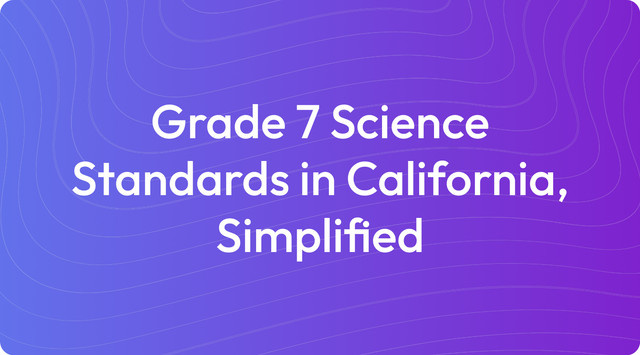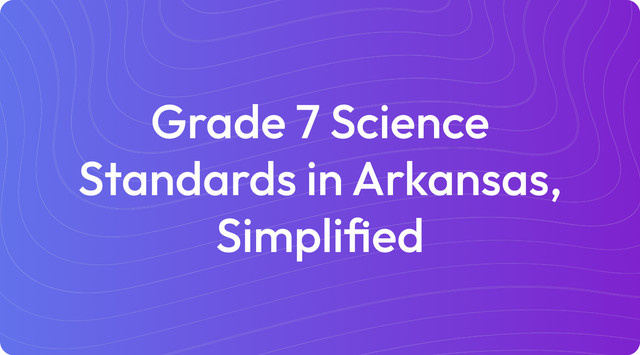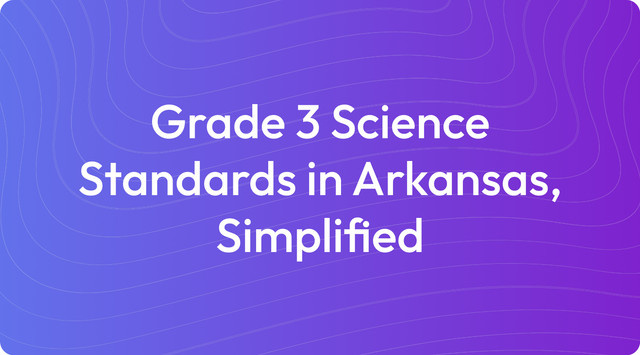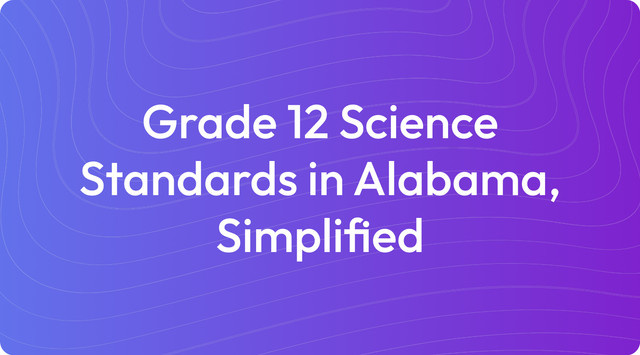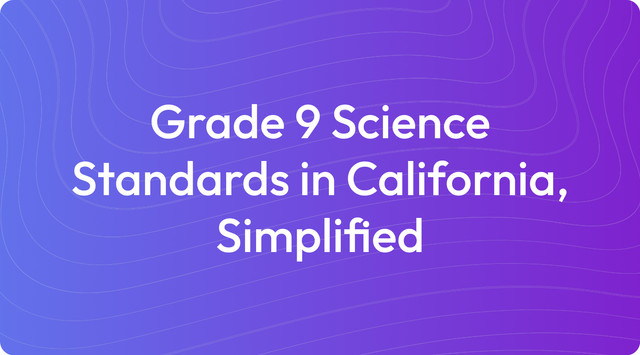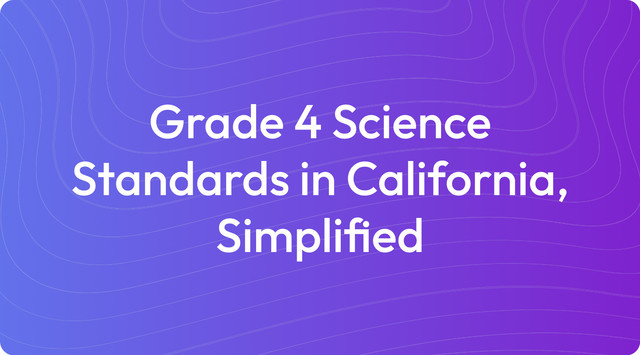Grade 2 Science Standards in Arizona, Simplified
Explore Arizona’s grade 2 science standards for 2025—core concepts, practices, and skills to spark student inquiry. Create & share with TeachShare today.
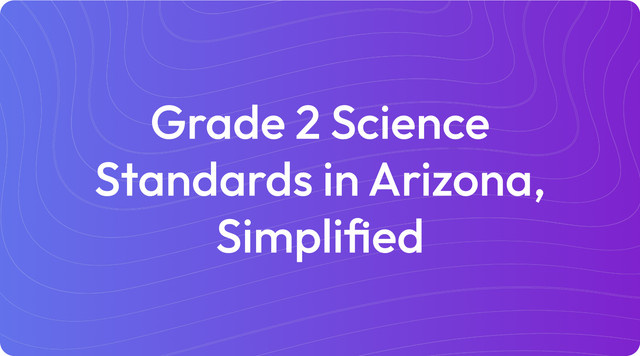
We understand that state and national standards are a foundational part of your work. Our goal is to offer resources that bring clarity to these requirements, helping you focus on creating meaningful learning experiences for your students.
Education standards are a set of learning goals that outline what students should learn at each grade level. They provide a framework of what to teach, but leave the instructional methods up to your professional expertise and local district decisions. For example, Arizona's second-grade science standards map out core concepts students should explore across physical, earth, and life sciences. This consistency helps align efforts between students, parents, and teachers toward shared academic goals.
What Are Grade 2 Science Standards in Arizona?
The 2018 Arizona Science Standards provide a clear roadmap for second-grade learning. These standards are organized into three core areas to help guide your instruction. Here is an outline of the key standards for Grade 2:
Physical Sciences
- 2.P2U1.1: Plan and carry out investigations to observe and measure the effects of applying different strengths and directions of forces on the motion of an object.
- 2.P4U1.2: Develop and use models to represent how sound travels from one place to another and how it is produced by vibrations.
Earth and Space Sciences
- 2.E1U1.3: Observe, describe, and predict seasonal weather patterns and local variations.
- 2.E1U1.4: Develop and use models to represent the shapes and kinds of landforms and bodies of water in an area.
Life Sciences
- 2.L1U1.5: Develop and use models to explain that animals need to take in food, water, and air, while plants need water and light to survive.
- 2.L2U1.6: Explain how organisms obtain resources from their environment, such as food, water, and air, to meet their needs.
Sources: 2018 Arizona Science Standards, Next Generation Science Standards
Key Tested Standards
While all standards are important, assessments often focus on specific core concepts to gauge student understanding. Here are the key tested standards for Grade 2 Science in Arizona, organized by domain:
Earth and Space Science (ESS)
- 2.E1U1.4: Observe and describe patterns in the movement of the Sun, Moon, and stars to understand how these movements create patterns like day and night and relate to time.
- 2.E1U1.5: Investigate how natural forces like wind and water shape the land, exploring erosion and how landscapes change over time.
Life Science (LS)
- 2.L2U1.6: Develop a model to show how plants and animals rely on each other and their environment for survival, demonstrating an understanding of ecosystems and food webs.
- 2.L2U1.7: Explain how plants and animals survive changing conditions by responding to their environment through adaptations, migration, or hibernation.
Physical Science (PS)
- 2.P1U1.1: Plan and carry out hands-on investigations to explore motion and understand forces like pushes and pulls.
- 2.P4U1.3: Investigate how different types of energy, including sound, light, and heat, can affect or change objects.
Sources: Arizona Department of Education, Next Generation Science Standards
Example Learning Objectives for Unit Planning
Learning objectives are clear, specific statements that describe what you want your students to know or be able to do by the end of a lesson. They act as a guide for your instruction and a benchmark for assessing student understanding. Well-crafted objectives connect your daily activities directly to the broader state standards.
Here are example learning objectives for two Grade 2 Arizona Science Standards:
Standard: 2.E1U1.5
Description: This standard asks students to investigate how wind and water shape the land.
- I can explain how water changes the shape of the land, like making rivers or valleys.
- I can describe how wind moves sand and dirt to create new landforms, like dunes.
- I can use a model to show how erosion happens over time.
Standard: 2.L2U1.6
Description: For this standard, students develop a model to show how plants and animals depend on each other and their environment for survival.
- I can show how plants and animals need each other to live by drawing or building a food web.
- I can describe how animals get food or shelter from their environment.
- I can explain why plants and animals must work together to survive.
Key Changes & Updates
The 2018 Arizona Science Standards introduced several important updates, shifting the focus from memorization to a more active, hands-on approach. A central change is the move to three-dimensional learning, which weaves together core science ideas, scientific practices, and overarching concepts. This means students learn by doing—investigating observable events, asking questions, and conducting their own inquiries to build a much deeper understanding of scientific principles.
The standards also place a strong emphasis on local relevance and real-world connections. You are encouraged to ground lessons in Arizona-specific examples, from desert wildlife to the erosion that formed the Grand Canyon. This approach helps students apply their knowledge to solve practical problems. Additionally, the updates integrate foundational engineering design skills and promote cross-curricular connections with math and literacy, helping to create a more cohesive learning experience for your students.
Create with TeachShare
We understand that turning these standards into high-quality, engaging materials for your students is a significant task. Our tools are built to support you by simplifying the creation of lessons and activities that directly meet Arizona's requirements. This allows you to dedicate more time to what you do best: teaching. Start creating standards-aligned instructional resources with TeachShare now.
Frequently Asked Questions
Here are answers to some common questions about teaching the Grade 2 Arizona Science Standards:
How do these standards prepare students for higher grades?
The Grade 2 standards focus on building foundational scientific skills like observing, asking questions, and building models. Mastering these basics prepares students to successfully tackle more complex topics in later grades, such as ecosystems and Earth systems.
How can I make science engaging for second graders?
The key is hands-on activities. Let students get curious by building models, observing natural phenomena like erosion or shadows, and playing learning games. When they can explore through real-life examples and experiments, the concepts stick.
How can I integrate math and literacy into science lessons?
Science is a natural place for cross-curricular connections. You can integrate math by having students measure, compare, and graph data from their experiments. For literacy, encourage them to keep science journals to record observations or write short paragraphs explaining what they learned.
What assessments work best for these standards?
Performance-based assessments are a great fit. Ask students to demonstrate their understanding by doing something, like conducting an experiment, building a model, or explaining a concept out loud. Creating a simple rubric can help you evaluate their work fairly and consistently.
How do these standards connect to everyday life?
These standards help students see science in the world around them. They learn about real-world processes, like how weather changes the land or how plants and animals survive. These lessons make science relevant and show them it’s part of their daily lives.
Answer


